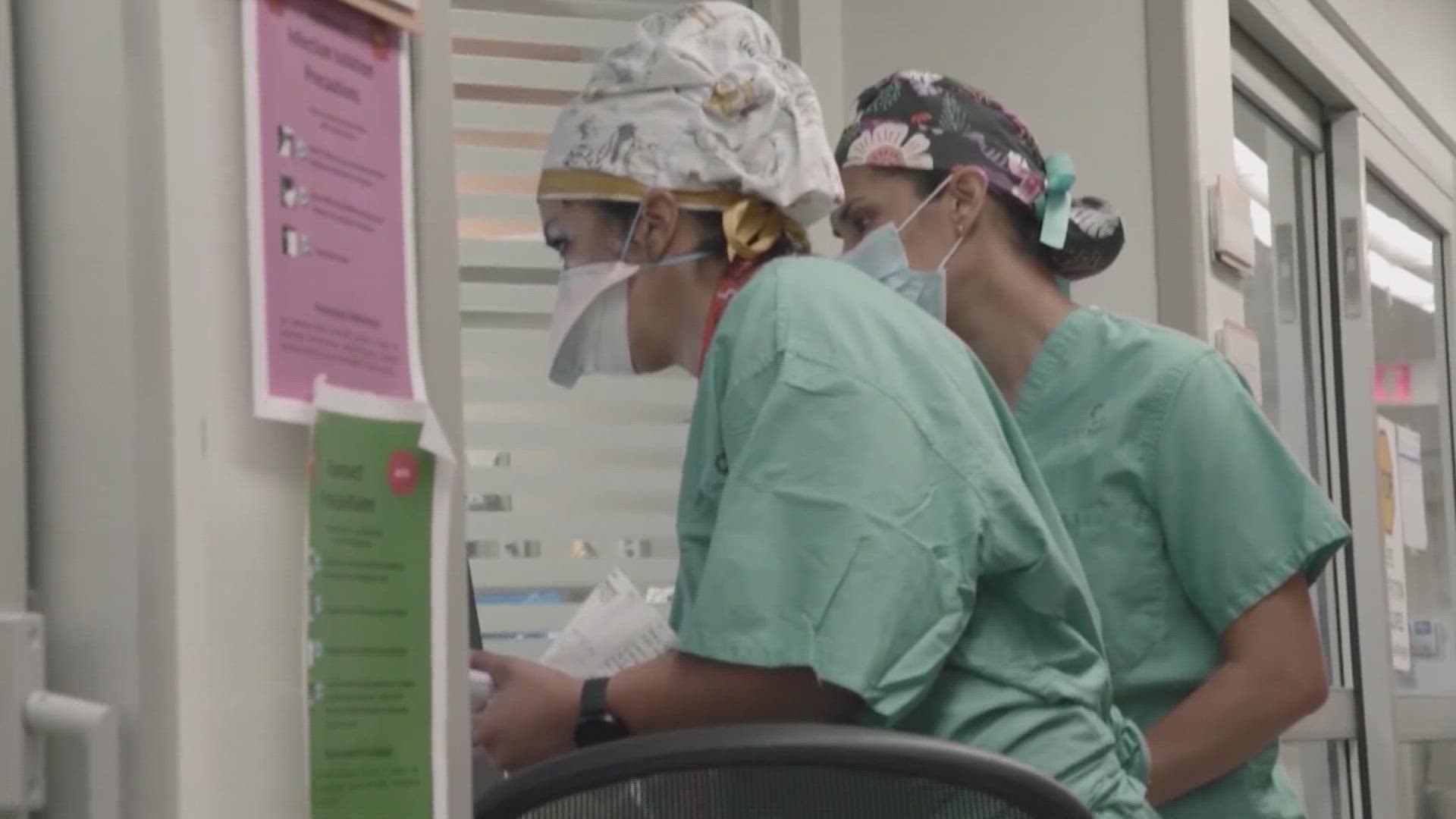SAN ANTONIO — The number of hospitalized patients with COVID-19 in the San Antonio area has more than doubled in the last month, according to Texas Department of State Health Services data.
There were 245 people with COVID-19 in southern Texas hospitals on June 28, up from 101 patients on May 28.
The change represents a 143 percent increase in 31 days. Hospitalizations have not been this high since March 11, near the tail end of the record-setting Omicron wave.
"The good news is the numbers we're seeing in the hospitals aren't extremely high," said Dr. Bryan Alsip, University Health's chief medical officer. "Of the ones we're seeing, at least locally, not many of those are severe."
Just 53 people with COVID-19 are in local intensive care units, up from 26 patients on May 28.
Researchers attribute the spike to new Omicron subvariants BA.4 and BA.5, which together have become the dominant strains of COVID-19 in the United States.
These subvariants appear to be more infectious but less lethal than previous versions of Omicron, said Dr. Ruth Berggren, a professor of medicine at UT Health San Antonio's Long School of Medicine.
"The percentages of those sequences in our community have increased, but they're lagging behind the rest of the country," she said. "That would indicate we're just at the very beginning of this current surge."
She and Alsip each suggested wearing a well-fitted mask indoors in public settings.
"This is it folks. Now is the time to go and get your booster," Berggren added.
The Centers for Disease Control recently heightened Bexar County's community risk level from low to medium.
Metro Health, San Antonio's public health authority, considers the area at high-risk. Local data indicates conditions are worsening, the authority said.
Since most COVID-19 testing now takes place at home, hospital figures are likely the best indicator for community spread. Few counties offer a way for people to self-report test results, skewing overall numbers related to positivity.
"I think hospitals aren't feeling the concern of a COVID wave yet," Alsip said. "Hopefully, we won't."
"There's a lot of people heading to the emergency room, though not very many of them are getting admitted. That's good," Berggren said. "It also means we're crowding our emergency rooms. That's bad."
Berggren said it's important for people with symptomatic COVID-19 to quickly alert their primary care physicians about their condition. A doctor may prescribe medications that lower the risk for severe infection.
She and Alsip each noted that hospitalization data should also be more indicative of disease severity in the community, now, since most hospitals have stopped testing asymptomatic patients.
In the winter, nurses would've tested a patient seeking care for a broken bone, for example. If that person had asymptomatic COVID-19, the state health department still considered them hospitalized with the disease.
This practice may have created a false sense of security. Even though hospitalizations broke records, not all of those patients required treatment for COVID-19.
Now, "those people are actually there because of their COVID symptoms or they're symptomatic," Berggren said.
"It's not a coincidental, 'They're here with heart failure, but oh by the way, they tested positive for COVID,'" she continued. "We're not seeing those kinds of numbers anymore because of the way we're testing."
Alsip said University Health is still "playing catch-up" with patients who delayed elective procedures or routine care during the pandemic's height.
"We're all very busy," he added.

